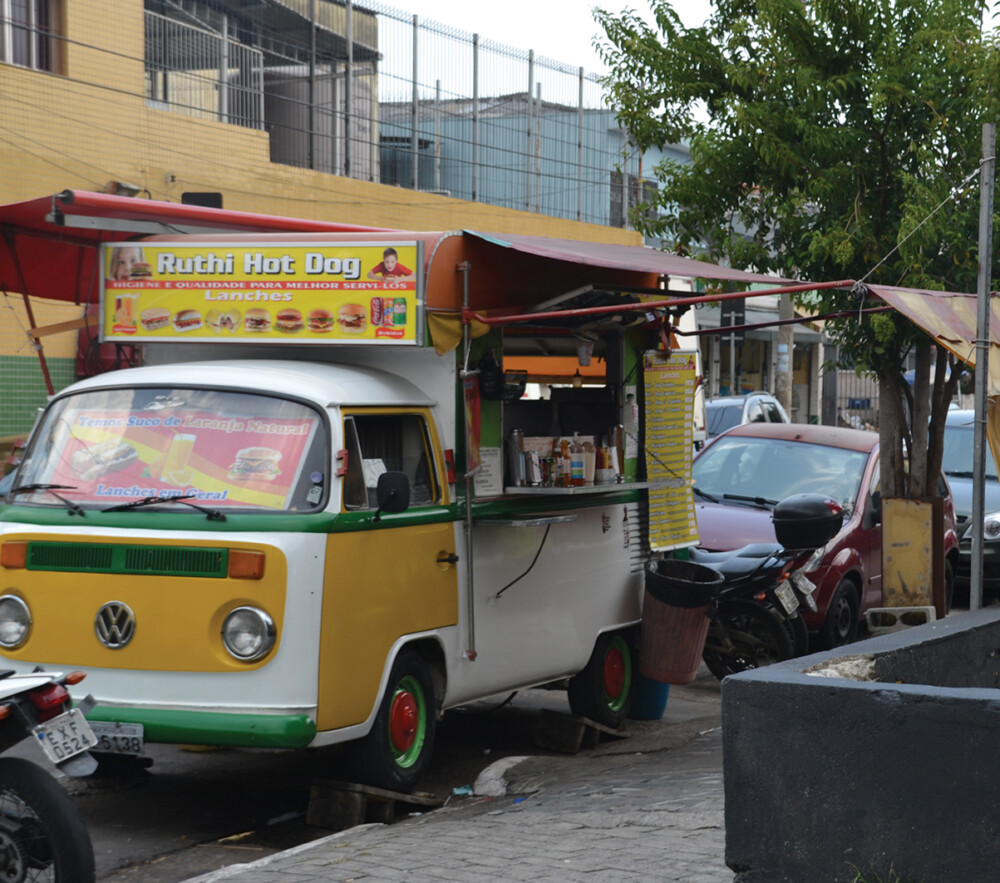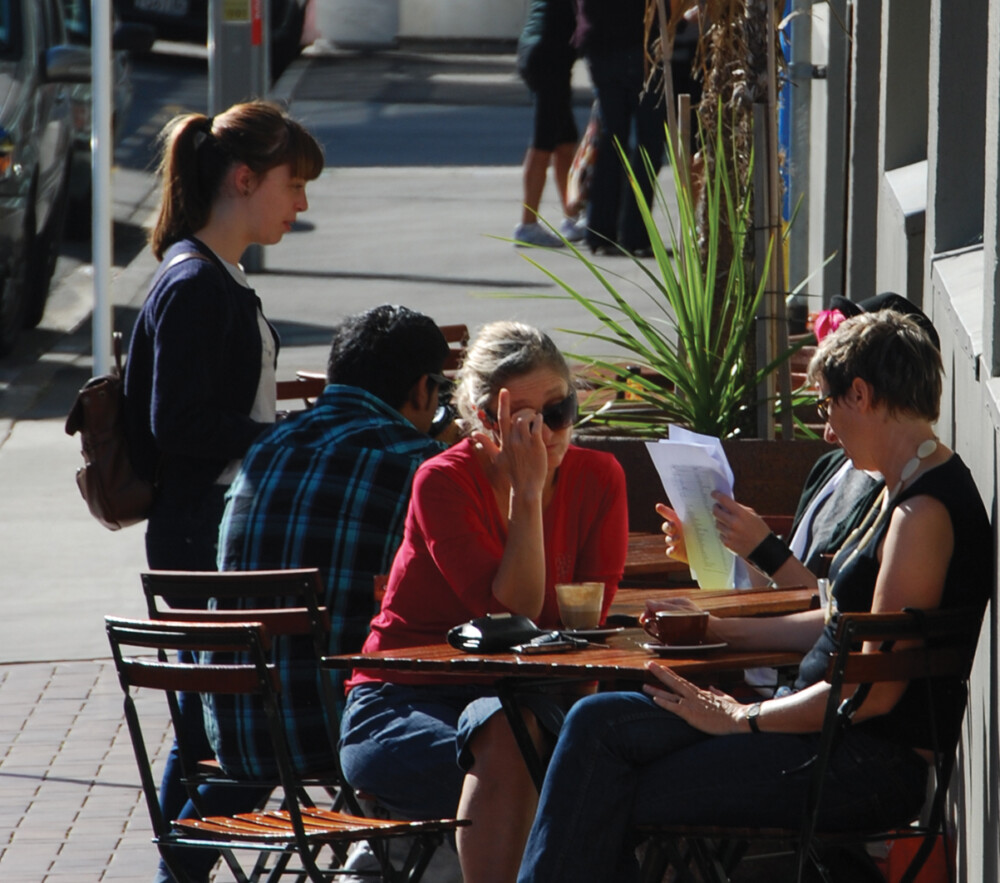-
About Streets
- Introduction
- Defining Streets
-
Shaping Streets
- The Process of Shaping Streets
- Aligning with City and Regional Agendas
- Involving the Right Stakeholders
- Setting a Project Vision
- Communication and Engagement
- Costs and Budgets
- Phasing and Interim Strategies
- Coordination and Project Management
- Implementation and Materials
- Management
- Maintenance
- Institutionalizing Change
- Measuring and Evaluating Streets
-
Street Design Guidance
- Designing Streets for Great Cities
- Designing Streets for Place
-
Designing Streets for People
- Utilities and Infrastructure
- Operational and Management Strategies
- Design Controls
-
Street Transformations
- Streets
-
Intersections
- Intersection Design Strategies
- Intersection Analysis
- Intersection Redesign
- Mini Roundabout
- Small Raised Intersection
- Neighborhood Gateway Intersection
- Intersection of Two-Way and One-Way Streets
- Major Intersection: Reclaiming the Corners
- Major Intersection: Squaring the Circle
- Major Intersection: Cycle Protection
- Complex Intersection: Adding Public Plazas
- Complex Intersection: Improving Traffic Circles
- Complex Intersection: Increasing Permeability
- Resources
Global Street Design Guide
-
About Streets
- Introduction
- Defining Streets
-
Shaping Streets
Back Shaping Streets
- The Process of Shaping Streets
- Aligning with City and Regional Agendas
- Involving the Right Stakeholders
- Setting a Project Vision
- Communication and Engagement
- Costs and Budgets
- Phasing and Interim Strategies
- Coordination and Project Management
- Implementation and Materials
- Management
- Maintenance
- Institutionalizing Change
-
Measuring and Evaluating Streets
Back Measuring and Evaluating Streets
-
Street Design Guidance
-
Designing Streets for Great Cities
Back Designing Streets for Great Cities
-
Designing Streets for Place
Back Designing Streets for Place
-
Designing Streets for People
Back Designing Streets for People
- Comparing Street Users
- A Variety of Street Users
-
Designing for Pedestrians
Back Designing for Pedestrians
- Designing for Cyclists
-
Designing for Transit Riders
Back Designing for Transit Riders
- Overview
- Transit Networks
- Transit Toolbox
-
Transit Facilities
Back Transit Facilities
-
Transit Stops
Back Transit Stops
-
Additional Guidance
Back Additional Guidance
-
Designing for Motorists
Back Designing for Motorists
-
Designing for Freight and Service Operators
Back Designing for Freight and Service Operators
-
Designing for People Doing Business
Back Designing for People Doing Business
-
Utilities and Infrastructure
Back Utilities and Infrastructure
- Utilities
-
Green Infrastructure and Stormwater Management
Back Green Infrastructure and Stormwater Management
-
Lighting and Technology
Back Lighting and Technology
-
Operational and Management Strategies
Back Operational and Management Strategies
- Design Controls
-
Street Transformations
-
Streets
Back Streets
- Street Design Strategies
- Street Typologies
-
Pedestrian-Priority Spaces
Back Pedestrian-Priority Spaces
-
Pedestrian-Only Streets
Back Pedestrian-Only Streets
-
Laneways and Alleys
Back Laneways and Alleys
- Parklets
-
Pedestrian Plazas
Back Pedestrian Plazas
-
Pedestrian-Only Streets
-
Shared Streets
Back Shared Streets
-
Commercial Shared Streets
Back Commercial Shared Streets
-
Residential Shared Streets
Back Residential Shared Streets
-
Commercial Shared Streets
-
Neighborhood Streets
Back Neighborhood Streets
-
Residential Streets
Back Residential Streets
-
Neighborhood Main Streets
Back Neighborhood Main Streets
-
Residential Streets
-
Avenues and Boulevards
Back Avenues and Boulevards
-
Central One-Way Streets
Back Central One-Way Streets
-
Central Two-Way Streets
Back Central Two-Way Streets
- Transit Streets
-
Large Streets with Transit
Back Large Streets with Transit
- Grand Streets
-
Central One-Way Streets
-
Special Conditions
Back Special Conditions
-
Elevated Structure Improvement
Back Elevated Structure Improvement
-
Elevated Structure Removal
Back Elevated Structure Removal
-
Streets to Streams
Back Streets to Streams
-
Temporary Street Closures
Back Temporary Street Closures
-
Post-Industrial Revitalization
Back Post-Industrial Revitalization
-
Waterfront and Parkside Streets
Back Waterfront and Parkside Streets
-
Historic Streets
Back Historic Streets
-
Elevated Structure Improvement
-
Streets in Informal Areas
Back Streets in Informal Areas
-
Intersections
Back Intersections
- Intersection Design Strategies
- Intersection Analysis
- Intersection Redesign
- Mini Roundabout
- Small Raised Intersection
- Neighborhood Gateway Intersection
- Intersection of Two-Way and One-Way Streets
- Major Intersection: Reclaiming the Corners
- Major Intersection: Squaring the Circle
- Major Intersection: Cycle Protection
- Complex Intersection: Adding Public Plazas
- Complex Intersection: Improving Traffic Circles
- Complex Intersection: Increasing Permeability
- Resources
- Guides & Publications
- Global Street Design Guide
- Designing Streets for People
- Designing for People Doing Business
- Overview
Overview



Many people use the street to conduct daily business. Their front doors line the street edge; their goods and services extend out onto the sidewalks; they run stalls within the street or push carts throughout the city. These people play a key role in shaping vibrant and dynamic streets.
Often mobile in nature, but sometimes fixed, on-street commercial activities are part of every large city, responding to demand for goods and services that is highly specific and varies with time and location. Street vendors, kiosk owners, fruit stalls, food trucks, and the extension of commercial establishments provide convenient services to commuters, pedestrians, and nearby residents. Spaces for business activities should be incorporated into the design of the street.
Where demand is likely to exist—in locations such as central markets, tourist attractions, and transit stations—include dedicated spaces on expanded sidewalks or in parking lanes.
These uses can activate otherwise blank building edges and, when situated in a parking lane, provide a welcome buffer between pedestrians and adjacent moving traffic.
Commerce is part of every city, and streets should be designed to accommodate formal and informal on-street commercial activity.
Accommodating commercial activity should balance the various users in a given location and always support a safe and vibrant street environment. Considerations should include:
- Siting and location with regard to local context.
- Critical distances to maintain clear pedestrian paths and crossings.
- Use of parking lanes or furniture zones along the sidewalk.
- Scale and design of any fixed or mobile structures.
- Permitting processes and local enforcement.
- Times and seasons of use.
- Clear communication of regulations.
- Ongoing maintenance including regular cleaning and waste management.
- Health and safety standards for activities involving food and beverages.
- Access to utilities such as power and water

Variations
Commercial uses provide vitality and activity within the street, support local economies, and make streets more livable and attractive to for all users. Many types of commercial activities provide amenities and add character to the street, from sidewalk cafés, to market stalls, food trucks, and push carts.

Milan, Italy. Sidewalk cafés animate a pedestrian-oriented street in the historic part of the city.
Sidewalk Cafés
Sidewalk cafés play an important role in animating streets and creating neighborhood destinations. While narrow seating areas can be provided in as little as 1 m widths, larger seating areas require deeper strips of 2–4 m.
The area reserved should not interfere with the pedestrian clear path, allowing a minimum width of 2.4 –3 m according to pedestrian volumes. Movable chairs and small tables provide more flexibility and can be easily removed to ensure wheelchair accessibility. Use furniture and planters to clearly demarcate the strip and make it more detectable for visually impaired users. Design sidewalk cafés to be universally accessible.

Storefront Spillovers and Stalls
Ground floor businesses often want to extend their storefronts by installing display areas adjacent to their facades, attracting visitors or increasing attention. These areas should only exceed the length of the storefront, unless covering blank walls or fences, and be at most 1.5–2 m wide. Maintain the sidewalks clear path and universal accessibility to the business, and develop local guidance to clarify whether displays must be disassembled daily or seasonally.

Street Vendors and Kiosks
Push carts, market stalls, and kiosks come in many shapes and sizes and can be occasional or regular features of a particular streetscape. These important street users can fit in single file spaces as narrow as 1 m wide or fill 3-m wide stretches of a street in a busy commercial or market-like context.

Adapted by Global Street Design Guide published by Island Press.
Next Section —